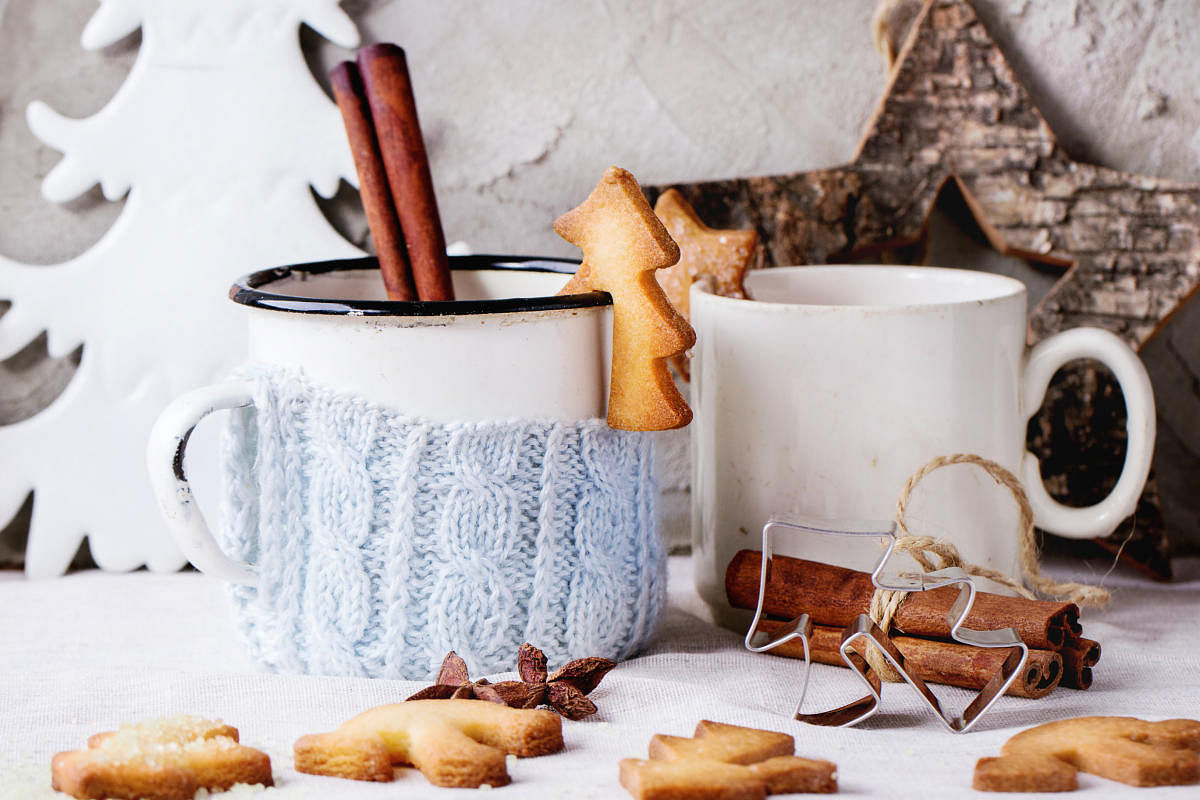
Contemplate hot chocolate and one wonders how chocolate or cocoa was introduced to the world — was it with the Aztec who had it as a bitter concoction called xocoatl, or the Spaniards who sweetened it and kept it their ‘energy boost’ secret for 100 years before Europeans laid their hands and made it into a rich, sweet drink that was loved by both kids and adults?
In fact, chocolate reached India with Cadbury in 1948 in much that way. Yes, there was the Dairy Milk bar, but melt it — and it would be our very first version of the hot chocolate. Fascinatingly, even the Armed forces who were introduced to these
energy blocks, too fell for the drink version rather than a bar. That drink was made with a semi-sweet chocolate mix that could turn any milk into this rich, cocoa sweet, buttery beverage that was lapped with ease — be it in summer or winters.
That drinking chocolate, says seasoned bartender Yangdup Lama (co-owner Sidecar), “was our elixir and the very go-to drink to make any occasion special. Such was the brilliance of the drinking cocoa powder that not only Amul came up with its own Indian version suited to our palate, but malt drink makers used it as their prime flavouring for better commerce.” In fact, adds Lama, “for a generation, it was the definition of chocolate — and the single beverage that made most of our childhood
memories.”
The scenario changed in 2000 with the advent of good quality chocolate covertures — or as we call the bitter chocolate, says Chef Avijit Ghosh, Corporate Pastry Chef, The Leela Hotels. Suddenly, ‘hot chocolate’, which till date was identified with its rich brown colour took on a nicer, more glossy appearance and a significant change in taste as well.”
With better brands, Indians began discovering newer versions of chocolate that were closer to the real chocolate known across the world with brands like Lindt, Godiva, Hershey and such. This, says Chef Harpawan Kapoor, Chef ,R&D, ITC Food division, “made a major dent into how chocolate was perceived. Bitter became better, and with that the search for a great ‘hot chocolate’.”
Curiously though the acceptability of bitter chocolate came far easier than that of the hot chocolate, which adds Chef Sharad Dewan, Regional Director, Food Production, The Park Hotel, “gradually developed with the rising interest in coffee. Coffee houses and patisserie standalones were the only places that could sell chocolate given the house blend they came up with, which had some amount of coffee to create that heady feel.”
The revival of hot chocolate, adds Chef Vikas Seth, Culinary Director, Sanchez Cantina, happened five years ago, at least for the artisanal version. And the resurgence was both ways: with the patrons who had grown to like bitter drink courtesy the coffee rage; and chefs, who began looking at it as a master work of flavours.” Result, says Lama, who often creates his own chocolate mix using the best bitter chocolate variant, “hot chocolate became an interesting dessert option with different versions popping across the country — some tailor-made for adults.”
Like Chef Seth’s hot spicy chocolate that follows the modern Mexican style of making the Aztec drink with spices like nutmeg, cinnamon and vanilla with arbol chilli sprinkled on top to “give it this interesting melange of flavours instead of just the spice.” Chef Seth creates another version using the arbol-cream foam for those graduating to the slightly bitter, yet richer hot chocolate. His secret? Evaporated milk that creates that luscious appearance and taste. The milk you choose, adds Chef Ghosh, “does play a vital role, but more than that is the chocolate you choose. Usually I use a combination of two good quality chocolate covertures — one that is bitter and one with a slightly fruity note to create our version of the rich chocolate. But what really differentiates a good hot chocolate to an artisanal one is the process of emulsification. In my years, I have seen cocoa pulverised in hot milk bringing out the best result.”
Concurs Chef Kapoor, who as part of the ITC Speciality Food team, which includes Fabelle, has created signature hot sellers of the European drink, and believes that blending actually gives the drink its velvety rich appearance and taste. “For a good hot chocolate,” says the chocolatier, “finishing matters just as much. I do mine the classic way with a splash of dark rum and torched marshmallow.”
For Chef Sandeep Sadanandan (Head Chef Byg Brewski Brewing Company), who has been creating the famous Aztec drink with an interesting fruity take for the last two Christmas’ brunches, it is all about the infusion. “Curating a brilliant tasting hot chocolate isn’t just about paying an ode to cocoa but also the sublime notes that make for a brilliant chocolate. In other words, fruits. So our version is a take on the Mexican drink and comes infused with cinnamon and orange zest soaked in cream to give it that refreshing, warm after-taste that would make you go for the next.” Just like old times…